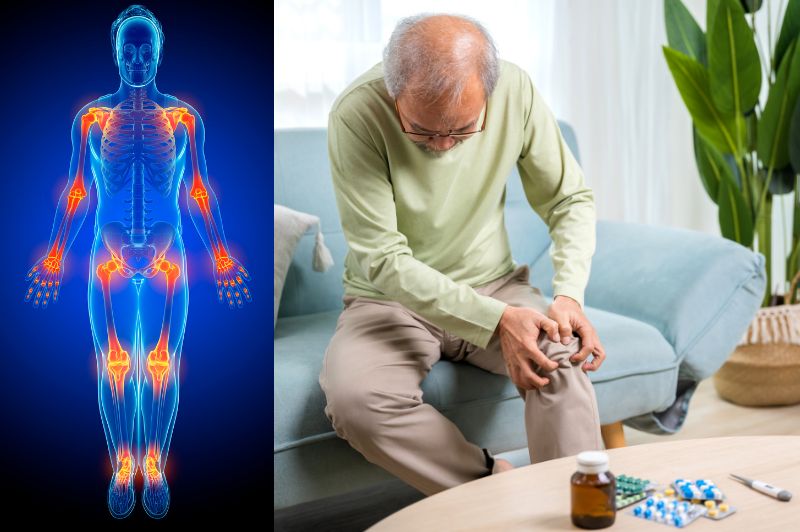As we age, the body’s functions begin to degenerate and bones begin to become porous. Some people are prone to orthopedic diseases. If they are not controlled in time, the disease will recur and affect the body’s normal activities. In life, there are many types of orthopedic diseases, which can be classified according to specific symptoms, which helps to find effective treatments, alleviate patients’ pain and promote physical recovery.
What are the common orthopedic diseases?
Cervical Spondylosis
People who sit at work for long periods of time cannot move their cervical spine frequently, which can easily cause cervical spondylosis. Patients have obvious soreness and stiffness in the cervical spine, which can also affect the normal function of the nervous system and cause dizziness.
Periarthritis of the Shoulder
People who often do heavy work have a heavy burden on their shoulders, which can easily cause periarthritis of the shoulder. They will feel pain in the shoulder area and the disease will often occur at night, causing the patient’s sleep quality to decline and insomnia. Patients should seek timely treatment to avoid worsening of the condition.
Lumbar Disc Herniation
If the waist bears too heavy a burden in the long term, it will cause lumbar disc herniation, which is also a common orthopedic disease. It causes obvious pain in the waist and numbness in the lower limbs, making it impossible to move normally.
Arthritis
Some people’s joints are traumatized or infected by bacteria and viruses, which causes inflammation and makes them prone to arthritis. The joints become red, swollen and hot. The disease often flares up when the weather is cold or rainy, affecting the quality of life. Severely ill patients may also suffer from joint disabilities.
Ankylosing Spondylitis
People with poor autoimmunity will suffer from ankylosing spondylitis. In the early stages, patients will experience stiff waist and pain, and have difficulty turning over when sleeping. The symptoms will be alleviated after activities. As the disease progresses, the pain will worsen and the spine will gradually develop deformities.
Femoral Head Necrosis
Common orthopedic diseases include femoral head necrosis. The early symptoms of patients are not particularly obvious. As the disease progresses, patients will experience pain in the femoral head, difficulty walking, and limited joint movement. A small number of people have femoral head collapse, lower limb malformation, and the pelvis will tilt to one side, affecting the patient’s normal walking.

Sciatica
Sciatica is also an orthopedic disease. Patients experience pain in the buttocks and a burning sensation in the affected area. When the pain worsens, it makes it difficult for the patient to walk. People with sciatica will have sore muscles and weakness, and they will limp when they walk.
Fractures
When bones are hit by external force, fractures occur. X-ray examinations show that some patients have broken bones and feel pain. The affected area cannot move freely and requires surgical treatment to reposition the bones.
Gout
In some middle-aged and elderly people, increased uric acid levels in the body can cause gout, causing pain in multiple joints of the body. The disease often flares up suddenly at night when the patient is sleeping, with symptoms of redness and swelling in the joints and increased temperature in the affected area.
How to prevent orthopedic diseases in daily life?
Orthopedic diseases are very harmful to the human body. In daily life, you can exercise properly to promote bone health and help reduce the occurrence of orthopedic diseases. Maintain a correct sitting posture, place your feet firmly on the ground, relax your body, and avoid being too stiff.
You can properly supplement vitamins to promote calcium absorption, which is beneficial to bone growth and development and reduces the occurrence of orthopedic diseases. Eat protein-containing foods in moderation to replenish the nutrients needed by the body in a timely manner and enhance physical fitness. Do not take drugs containing hormones for a long time, otherwise it will cause calcium loss and increase the risk of orthopedic diseases.
People with orthopedic diseases should receive timely treatment and take medication to alleviate their symptoms, promote bone recovery, and maintain normal physical activities.
Clonclusion
Joints are an important part of the human body, but over time, joint health can be affected by a variety of factors, leading to pain, stiffness, and limited mobility. To protect joints, we need to avoid the five words that joints fear the most and insist on doing four things: proper exercise, weight control, warmth and cold prevention, and proper calcium supplementation. At the same time, maintaining correct posture and movement, and regular joint care and examinations are also important measures to protect joints. Let us protect our joints together and enjoy a healthy life.


